Bamboo has long been used as an assembly material in china, particularly Hong Kong, because of its versatility. One of the most interesting applications of the wood is its structural function for scaffolding. Extremely eco-friendly and cost-effective resource, it continues to be used for this purpose because it is durable enough to support the weight of builders, their equipment and materials, but is lightweight itself. Unlike typical metal scaffolding, Bamboo can also be cut and tailor-made to suit any contour of construction - it can be configured into a variety of shapes and follow irregular architectural features of a building, and takes very little time to build-up. It is light and easily transportable to other sites and no machinery is required to assemble the scaffold and put it in place. When one job draws to a close, bamboo can easily be recycled and used for another project.
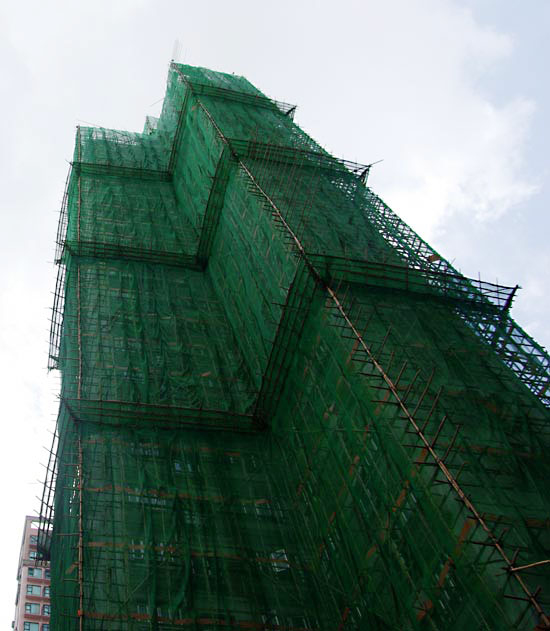
a high-rise is encased in double-layer scaffolding
image © designboom
double-layered scaffolding consists of a single outer layered scaffold and an inner layer of posts
and ledgers (horizontal limber which is fastened to the vertical uprights of a scaffold)
which are erected inside. between the two layers, short poles or transoms (crossbar pieces)
are used to support timber planks that form working platforms.
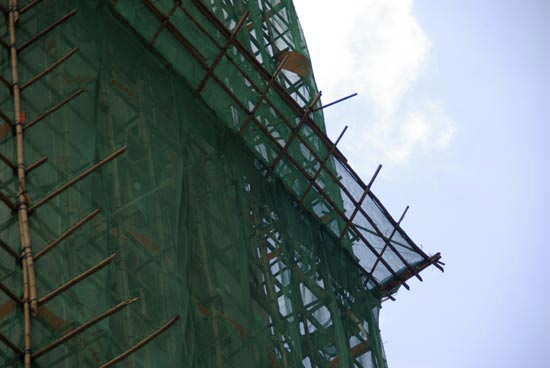
image © designboom
the main types of bamboo which are used for the purpose of scaffolding are mao jue and kao jue.
when using the wood it needs to be completely dried out and free of any cracks or rot.
the mao jue variety is the primary component of a scaffolding structure.
it is used for vertical and diagonal members and maintains at least a 70 mm nominal external diameter.
kao jue is used for vertical and horizontal members and are at least 45 mm in their external diameter.
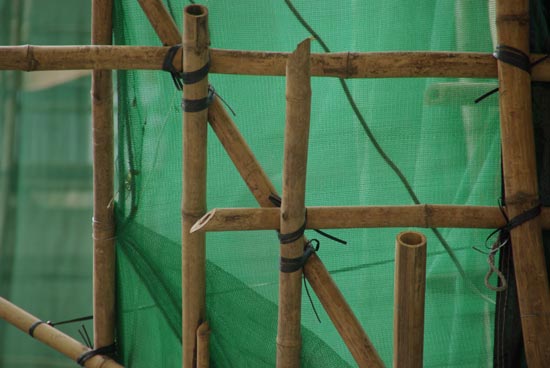
a look at the binding methods used to hold the bamboo components together
image © designboom
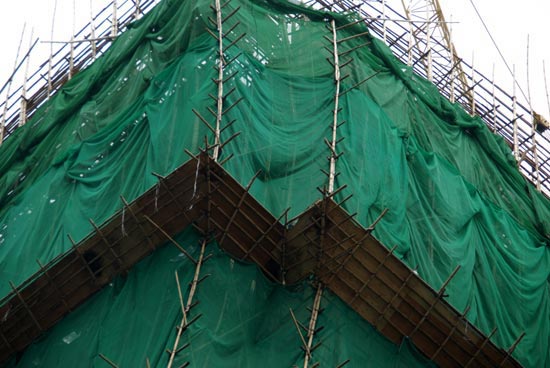
the bamboo is arranged to provide elevated stages for construction workers
image © designboom
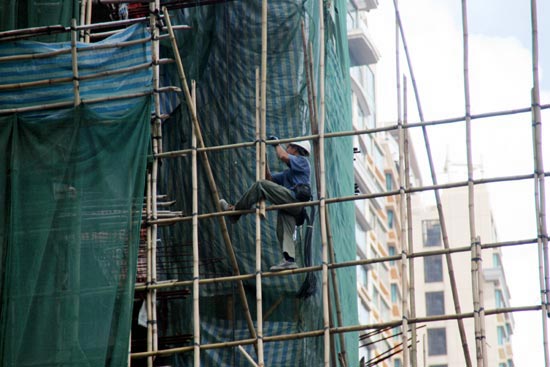
a worker climbing a grid-like assembly of bamboo
image © designboom
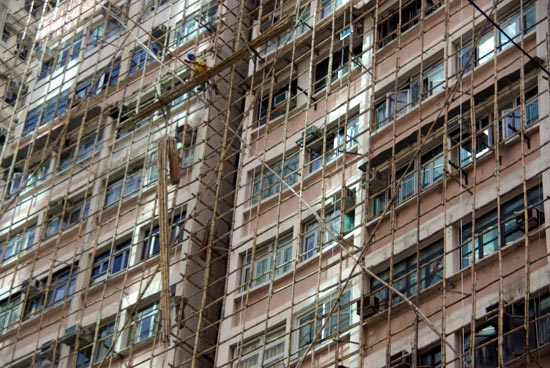
the complex framework
image © designboom
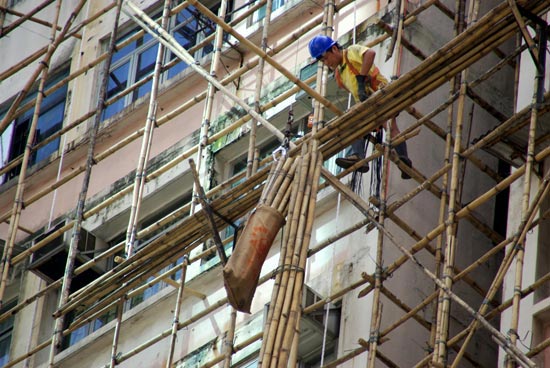
bamboo being passed up to workers via harness and sack
image © designboom
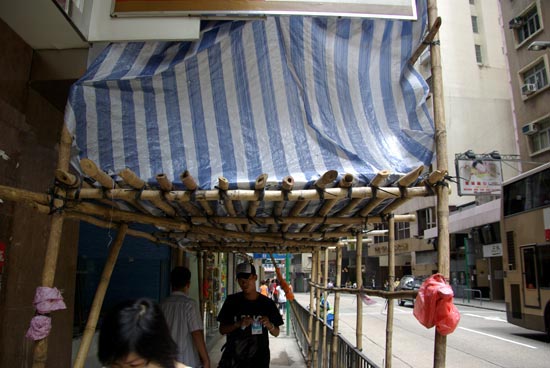
creating a canopy over the sidewalk
image © designboom
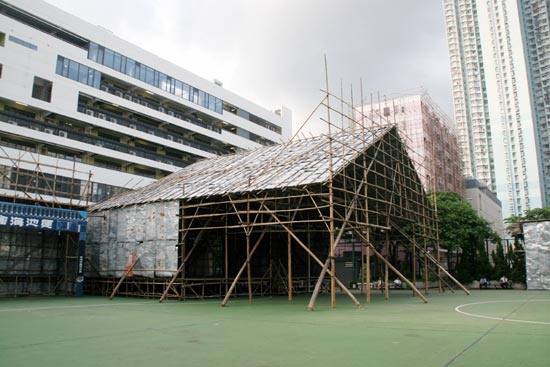
the versatile material is also used as a structural frame for houses and buildings
image © designboom
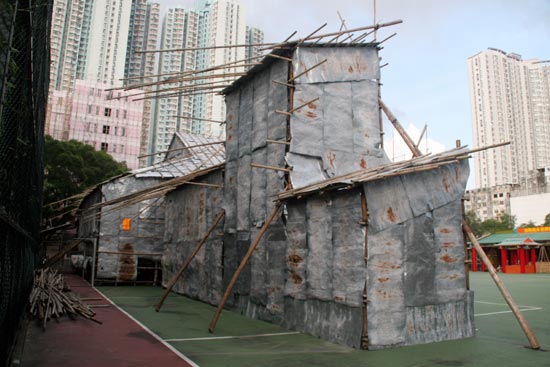
image © designboom
This is an excerpt from an article originally published in Designboom March 2009.